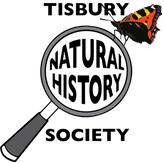|
Some more by Andrew Graham on the handsome Hobby - our newly-visiting high-speed falcon.
'The Hobby's preferred hunting-grounds are heathlands, wetlands and woodland edges, which are rich in large insects such as dragonflies and damselflies. It chases and catches these on the wing with its claws - unlike swifts, whose feet are only used in the nest so must catch prey with their beak. The Hobby's long, pointed wings allow it to accelerate rapidly and manoeuvre acrobatically. It will pass smaller prey straight to the beak and feed in flight. It will also hunt small birds and is even speedy enough to catch swifts and house martins. 'It is very slightly smaller than a Kestrel and looks like a small Peregrine Falcon with which it shares a dark hood and mask with a white cheek patch on its head. But the most distinctive feature to look out for is the brick-red feathers of the under-tail coverts which makes it look as if it is wearing red trousers. 'The Hobby nests in trees and open woodland but rather than build its own nest it often uses those built by other species such as crows. It is most frequently seen in southern England although it is expanding its range. Some think that the Hobby may have benefited from an expansion in the number of dragonflies because of all the flooded gravel pits in England. Langford Lakes near Wylye are a good example of this, where Hobbies can often be seen swooping above the lakes seeking for prey, especially during migration. 'At the end of the summer they will head south to Africa to overwinter where there are more insects. For the present, it is work keeping a look out in the vicinity of Fonthill Lake, Wardour Lake, along the Nadder or other places where there may be plenty of large insects flying. 'The scientific name for the European Hobby is Falco subbuteo. When Peter Adolph invented his tabletop football game, he made a patent application to call it “Hobby” but was refused. As he was an ornithologist, he chose the name Subbuteo instead. Thus, he rather cleverly retained the Hobby name by an alternative route although, as a child I for one found the name rather mystifying, leading me to assume it came from Italy.' Comments are closed.
|
Photo: Avocets (Izzy Fry)
The headers display photos taken by our members. Do get in touch via the Contact Form if you'd like to submit a photo for selection.
Archives
May 2024
Categories
All
|

 RSS Feed
RSS Feed